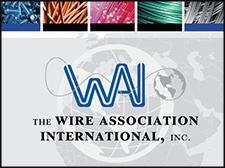Smart Factory Hackathon: Talented data-science specialists develop solutions for the factory of the future
5 key trends in the global smart factory market
Local Motors: Driving Innovation with Micro-Manufacturing
Fujitsu to sell 'smart' factory systems in China
OMRON to Introduce 15,583 Models in 7 Categories to World, Second Wave of FA Devices Built on Common Design Platform
Adidas Shows Off First Shoe Made In Its German Smart Factory
How to Attract Millennials to Advanced Manufacturing Jobs
Bosch, SAP team up for Industry 4.0
Industry 4.0: Cloud driving the rise of machines
Safety solutions for intelligent human-robot collaboration
IIoT and Industry 4.0 to Create Growth in Telerobotics in Manufacturing
Hirose, Harting Team Up on 10 Gbit Ethernet Connector Standard
Why manufacturing will make or break the future of energy
New technologies reshape production lines
A New Effort to Teach Low-Income Students Marketable Skills
Records 586 to 600 of 665
First | Previous | Next | Last
Automation & IIoT - Featured Product

